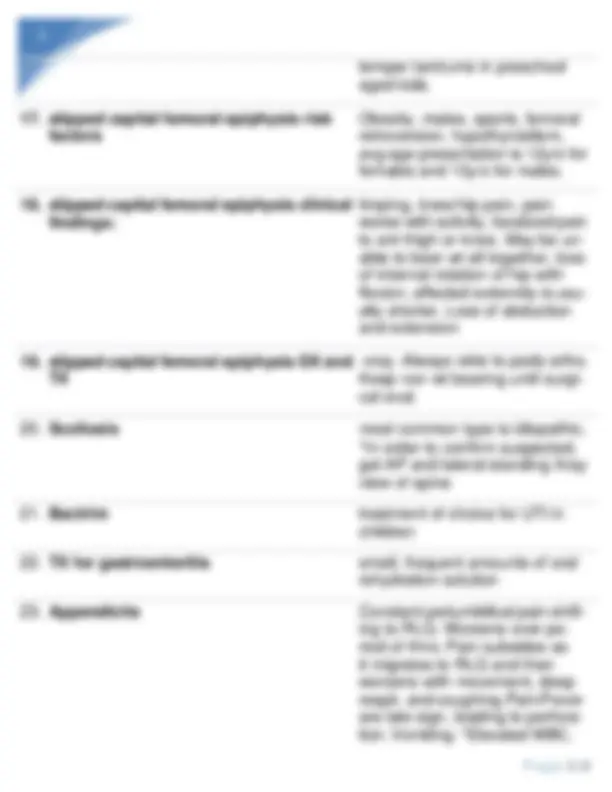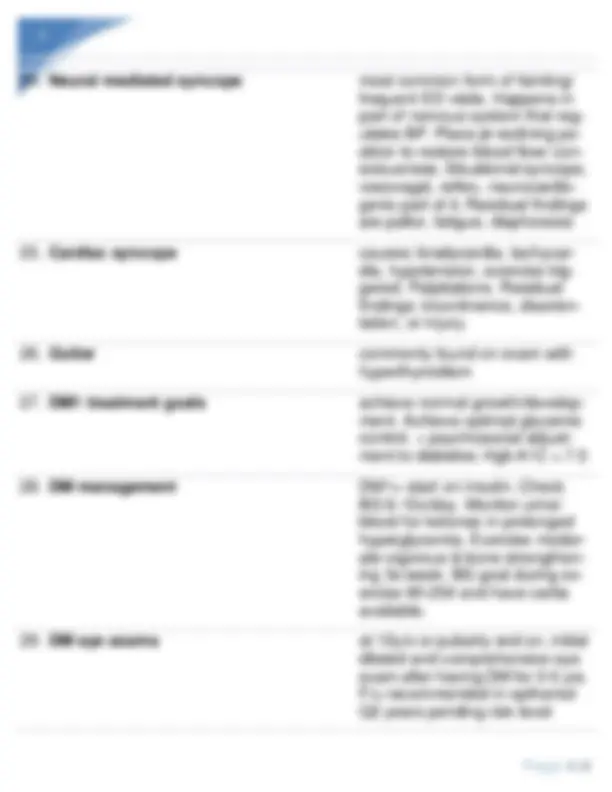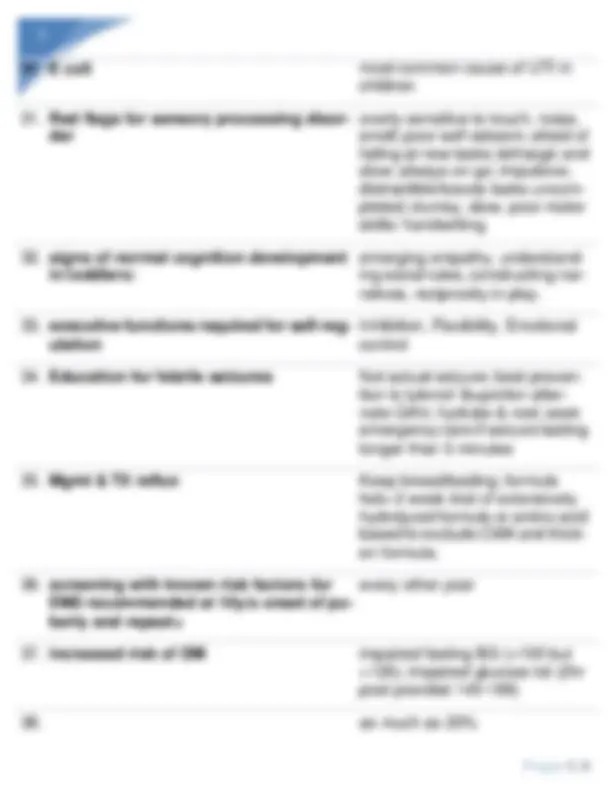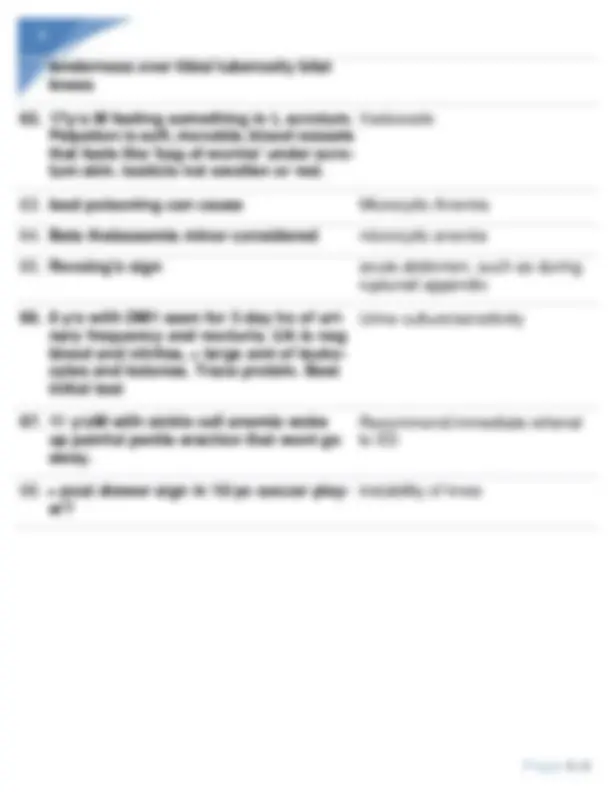






Study with the several resources on Docsity

Earn points by helping other students or get them with a premium plan


Prepare for your exams
Study with the several resources on Docsity

Earn points to download
Earn points by helping other students or get them with a premium plan
Community
Ask the community for help and clear up your study doubts
Discover the best universities in your country according to Docsity users
Free resources
Download our free guides on studying techniques, anxiety management strategies, and thesis advice from Docsity tutors
NURS 629 exam 4 with correct verified answers|2024
Typology: Exams
1 / 8

This page cannot be seen from the preview
Don't miss anything!





*sexual abuse should be ruled out first
tenderness over tibial tuberosity bilat knees
62. 17y/o M feeling something in L scrotum. Palpation is soft, movable, blood vessels that feels like 'bag of worms' under scro- tum skin. testicle not swollen or red. Varicocele